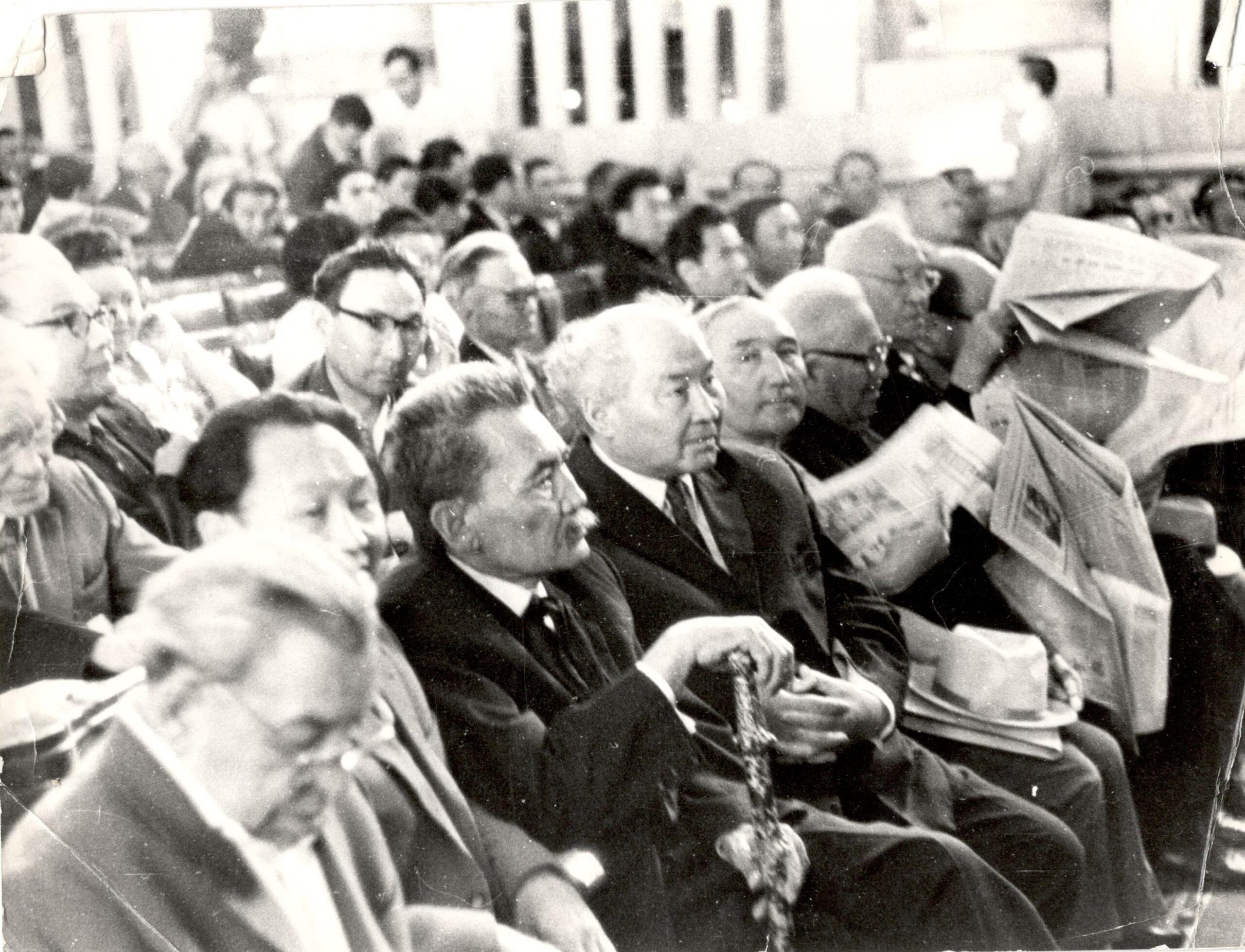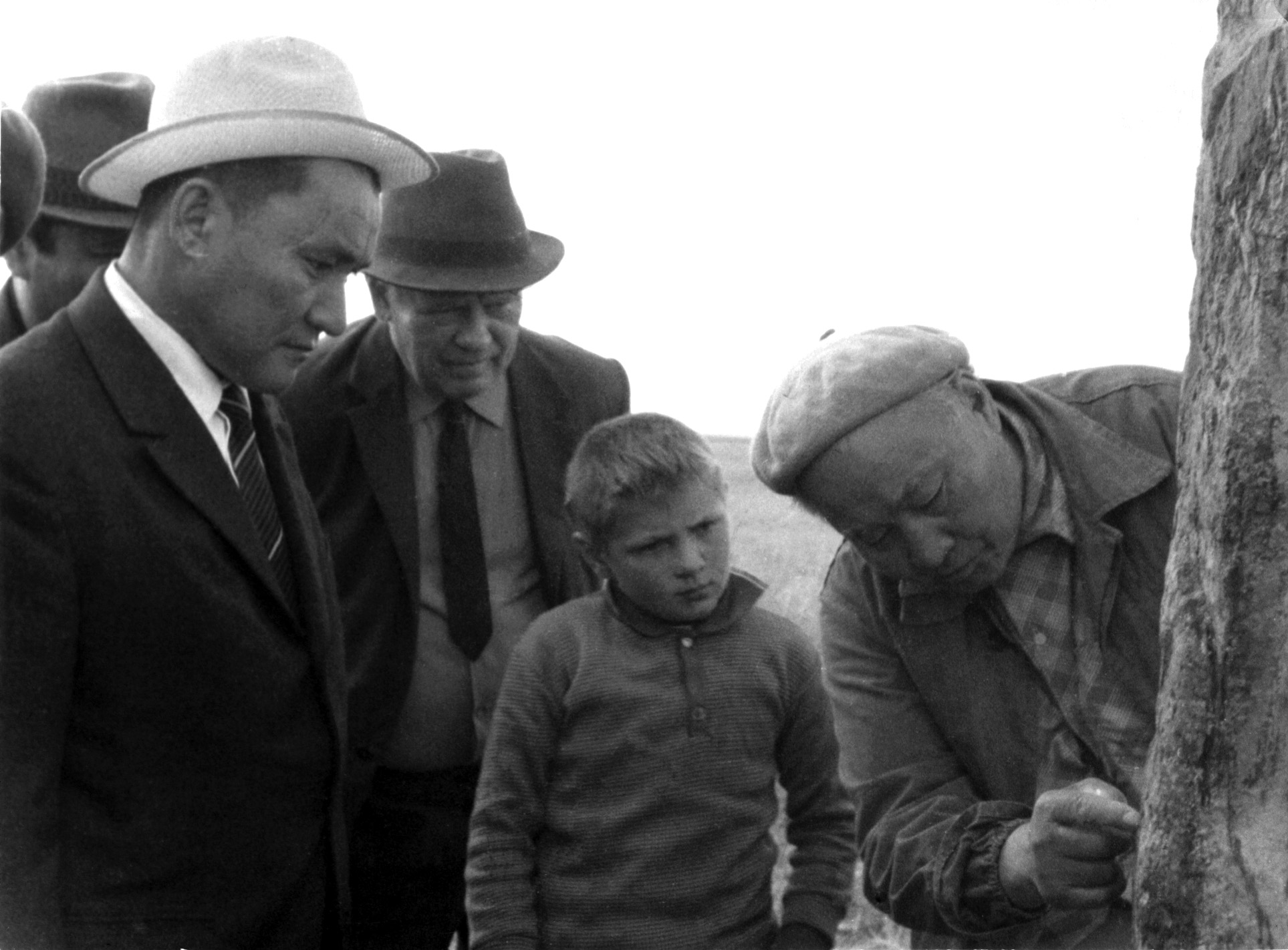ASTANA — On May 11, Kazakhstan celebrates the 120th anniversary of Alkey Margulan, a pioneer in Kazakh archaeology, scientist, and historian.

Alkey Margulan. Photo credit: Nomad Kazakhstan
The academician dedicated a significant part of his life to the exploration of ancient nomadic monuments. In the 1960s, drawing upon his research, he hypothesized the existence of cultural and political centers within the territory of the region known as Saryarka in central Kazakhstan, previously unknown to science.
According to his hypothesis, the Kazakh steppes witnessed the emergence of statehood during the period of Ulus of Jochi, also known as the Golden Horde or the Kipchak Khanate. This period saw advancements in cattle breeding, agriculture, flourishing crafts and trade, and the creation of architectural monuments. Decades later, Margulan’s hypotheses were confirmed by Kazakh archaeologists.
Margulan’s early years and academic journey
Born in 1904 in the Pavlodar Region, Margulan was raised by his father Hakan and mother Nurila, educated and enlightened people of their time. The family used to host renowned akyns (poets) and storytellers at home, which nurtured an intellectual curiosity in their son.

At the Congress of the Union of Writers of Kazakhstan. Photo credit: Egemen Kazakhstan
He received his primary education at the auyl (village) school. From 1915, he attended a three-grade Russian school. By the end of 1919, Margulan enrolled in teaching courses and commenced his career as a teacher in his native village.
In 1921, Margulan entered the Semipalatinsk Pedagogical College where he was a contemporary of notable figures such as the future academician and geologist Kanysh Satpayev, and the future writer and playwright Mukhtar Auezov. Later, Auezov invited Margulan to join him for further studies in Leningrad in 1928.
Margulan began his career as the Secretary of the Committee of the New Alphabet at the People’s Commissariat of Education of the Kazakh Soviet Socialist Republic (SSR) in 1930.
The enthusiasm for the national history of a promising young scientist did not go unnoticed. His desire to get to the roots of national culture, his friendship and close ties with the leaders of the Alash party—to whose ideas he remained faithful until the end of his life—aroused the suspicion of the authorities. In 1934, accused of betrayal and nationalism, Margulan was imprisoned in the Petropavl fortress, and then transferred to a psychiatric clinic.
Later, in 1938, he became a senior researcher and head of the sector of the Institute of History of the Kazakh branch of the USSR Academy of Sciences in Almaty, where he worked until 1946. It was also the year when Satpayev, the first president of the newly established Academy of Sciences of the Kazakh SSR, advised Margulan to pursue a career in archaeology.
Margulan’s contributions to Kazakh archeology
Margulan conducted the first archaeological excavations of ancient cities along the Syrdarya, Talas, Shu Rivers, exploring the cultures of Taraz, Otyrar, Sairam, Sauran, and Syganak.

Photo credit: Nomad Kazakhstan
Soviet archaeologists and historians believed there were practically no cities on the territory of ancient Kazakhstan, except the route of the Great Silk Road. Margulan’s studies of ancient cities across the Saryarka steppe proved otherwise.
His research focused on monuments of ancient architecture, leading to the discovery of unique archaeological sites of the Bronze Age and Early Iron, such as Begazy, Belasar and Sanguir during the Central Kazakhstan Archeological Expedition from 1946 to 1974.
The outcomes of archaeological research of the territory of Central Kazakhstan were consolidated in monographs such as “Ancient Culture of Central Kazakhstan,” “Begazy-Dandybaev Culture of Central Kazakhstan,” and “History of the Kazakh SSR” in five volumes.
Margulan, a versatile scientist, also authored monographs, including “Shokan and Manas” (about Kazakh ethnographer Shokan Valikhanov and the Kyrgyz epic “Manas”), “Yezhelgi zhyr, anyzdar” (Ancient songs, legends) and “Kazakh Applied Art” spanning three volumes.
“Alkey Margulan is a scientist who discovered the essence and meaning of all petroglyphs in the Kazakh steppe. He connects them not only with history but also with literature. His expertise on Tamgaly stones is unparalleled,” said Adilbek Amrenov, professor and candidate of philological sciences at a cultural event organized by Margulan University in Pavlodar and Bukhar Zhyrau Museum of Literature and Art on April 19.
“By conducting excavations and engaging in scientific and archaeological research for many decades, Margulan has laid a substantial groundwork for future generations of archaeologists,” said Elik Abeuova, an employee at the Margulan Centre, in an interview with Kazinform news agency.
Margulan has written at least 300 research papers and over 100 encyclopedic articles on history, archaeology, ethnography, and literature. He is a role model for multiple generations of Kazakh ethnographers, archaeologists, and historians. More than 50 doctoral theses have been defended under his leadership. His scientific works have been translated into several foreign languages.
Margulan Center in Pavlodar
A scientific exhibition dedicated to Margulan’s legacy and the 800th anniversary of the Ulus of Jochi was inaugurated in Pavlodar city. The exhibition showcases archaeological findings spanning centuries and Margulans’ manuscripts, previously unrevealed to the public.
“While remembering Alkey Khakanovich, discussions often revolve around the Bronze Age monuments in Central Kazakhstan, such as those from the Begazy-Dandybaev culture. However, Margulan’s monographs, archaeological excavations, and extensive research also shed light on statehood monuments of the Ulus of Jochi,” said Abeuova.
The exhibition is divided into two segments. The first features original archaeological artifacts found in the Pavlodar Region. The second is Margulan’s notes, which were handed over to the center by the scientist’s daughter. It includes his reviews of his students’ works.
The exhibition also features ceramic tiles from the excavations of the Kalbasun tower, the reconstruction of an ancient robe with a floral pattern from the mausoleum of Bolgan-ana, and artifacts from the Auliekol necropolis, dating back to the fourteenth century.

